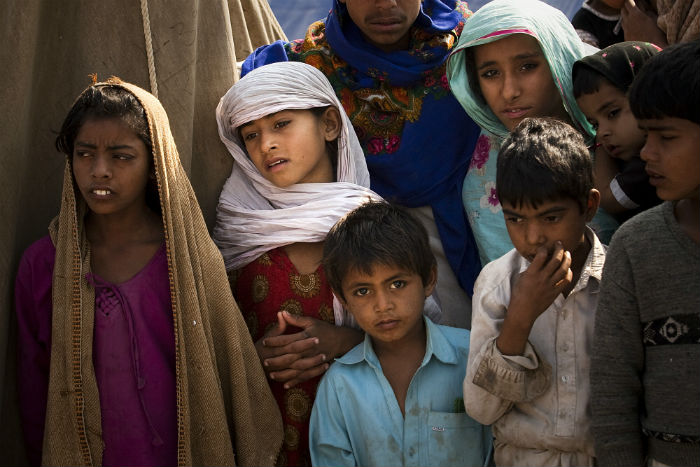By: Dinesh Bhugra
Send to a friend
The details you provide on this page will not be used to send unsolicited email, and will not be sold to a 3rd party. See privacy policy.
Migrant groups reveal how cultural differences affect mental health. Doctors need to adapt, says Dinesh Bhugra.
A woman from India’s Punjab region comes to the clinic saying and believing that her heart is sinking. A Middle Eastern woman is the next patient and she complains of heaviness in her heart. She is followed by a young, British white man who tells me that he feels gutted, as he has just been made redundant. All these idioms may be different, but they express distress related to underlying anxiety and depression.
We are born not with a culture, but into a culture. A couple of years ago, an Indian couple in Norway almost lost custody of their children because they were teaching them how to eat with their fingers, which a Norwegian social worker saw as a form of child abuse — this is to say that cultures define what is deviant or abnormal.
Dealing with abnormal behaviour is the bread and butter of psychiatry, and cultures have a crucial role in precipitating, presenting or perpetuating psychiatric symptoms.
Masculine and feminine cultures
Each culture has core aspects such as the way children are brought up, and different ‘micro-identities’ related to traits such as religion, gender, age, education or socioeconomic status. Clinicians and mental health researchers around the world need to be aware that even if individuals come from the same culture, they will have very different experiences and world views.
“We are born not with a culture, but into a culture.”
Dinesh Bhugra
But when it comes to cultural influences on mental health, two dimensions are important from a clinical perspective: whether the cultures are socio-centric or ego-centric, or whether they are ‘masculine’ or ‘feminine’.
The identity of an individual from a socio-centric culture is embedded in the family and kinship; it relies on what can be called ‘we-ness’. In ego-centric or individualistic cultures, an individual’s identity is that of themselves and their immediate nuclear family; this is described as ‘I-ness’. Masculine cultures have marked gender inequality and men tend to have more power, while feminine cultures have equal rights for men and women, and children are brought up as equals.
Cultures play a major role in how people express emotional distress, what explanations they give for it and where they seek help. The explanatory models people use to make sense of their illness may also be influenced by education and socioeconomic status.
This means that, in traditional cultures, someone suffering from emotional distress may see a faith healer or a shaman as their first port of call. Migrant groups tend to do the same, even after they enter a new culture.
Risks for migrants
In fact, migrant groups are interesting in what they show about the role cultures play. How a migrant responds to the new culture depends on whether migration is for educational, political or economic reasons, whether they migrate singly or as part of a group, or whether they are a primary migrant (the first person from a family to migrate) or a secondary migrant (a relative joining the primary migrant).
People who migrate or have had to flee their country may experience cultural bereavement as a result of a series of losses including their belongings and social networks. Another response is culture shock — the experience of being unable to understand the norms and expectations of a new culture.
“Masculine cultures have marked gender inequality and men tend to have more power, while feminine cultures have equal rights for men and women, and children are brought up as equals.”
Dinesh Bhugra
A third response, which may lead to tensions within families, is often described as cultural conflict. This may emerge when some individuals become more modern in their values compared with the elders in the family, and it may lead to tensions.
Each of these phenomena can lead to emotional distress, which may be expressed as a psychiatric disorder. Among migrants, refugees and asylum seekers, the process of acculturation is a significant step — it occurs as people learn about new cultures, and their language, diet, attitudes and behaviour change. Certain groups will feel comfortable in a bicultural situation, whereas others may not.
Cultural expectations
Clinicians must be aware of cultural differences and how they influence mental health. People’s cultural values will vary even within the same society or culture or geographical area — and they may well differ from those of the clinician. Even if the clinician and patient hail from the same culture, there may well be differences in language, education, social status or micro-identities which make communication difficult.
It doesn’t stop there. Clinicians’ own cultural norms and values, biases and prejudices may influence how they approach a patient. Cultures also influence how doctors and patients agree to what’s needed for therapy, and how well people might adhere to psychotherapy or drug treatment.
These factors deserve further exploration and research: one size does not fit all, whether it is psychotherapy or drug treatments.
In low- and middle-income countries, mental illness is still seen as an incurable and frightening experience. Cultural aspects and a lack of resources — human and financial — mean that different models of treatment must be pursued. An excellent example is the Dava and Dua (medication and prayer) project in Gujarat, India, where a mental health team based in a holy place combines Western treatment with prayers. Similar innovations can help patients, their families and carers in a culturally appropriate and sensitive way.
Dinesh Bhugra is president of the World Psychiatric Association and professor of mental health and diversity at the Institute of Psychiatry, Psychology and Neuroscience at King’s College London, United Kingdom. He can be reached at [email protected]
This article is part of our Spotlight on Mental health matters.














